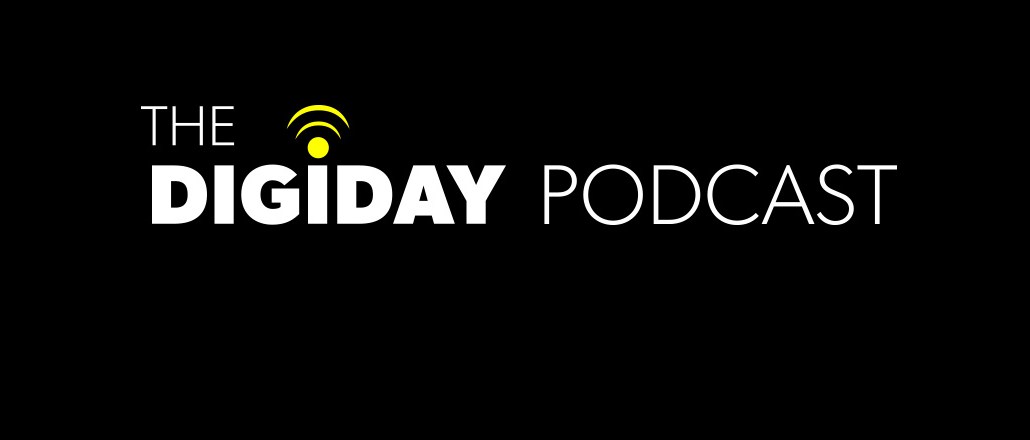Save 50% on a 3-month Digiday+ membership. Ends Dec 12.

Subscribe to The Digiday Podcast on iTunes or through your preferred podcast app. RSS feed here.
It’s hard enough to build a sustainable, scalable digital brand from scratch in the current media landscape. Imagine being a legacy print publisher trying to reinvent yourself as more than just a magazine company.
This is precisely the challenge facing Time Inc., which was spun off from Time Warner a year ago with $1.3 billion in debt. The publisher of Time, Fortune and People, among others, doesn’t want people to think of it as a “magazine” company anymore — and it’s easy to understand why. The company’s revenue fell 8.7 percent last quarter to $680 million, due in large part to sinking print advertising revenue, which still represents upwards of 80 percent its ad revenue.
But Scott Havens, svp of digital at Time Inc., is undeterred. In the 18 months since joining the company from the Atlantic, Havens has helped Time Inc. double down on video and explore e-commerce, launch new digital-only properties, push paywalls, invest in tech — and learn to play the Facebook traffic game.
“We’re transitioning, and transitions take a while,” said Havens, who joins the Digiday podcast this week to discuss Time Inc.’s journey. “I am encouraged by what I’ve seen in the last year-and-a-half I’ve been there. We’ve dramatically increased the scale of our digital operation. We’ve dramatically increased the monetization of that digital platform, acquired a bunch of new businesses.”
Excerpts and highlights from our broad-ranging discussion, lightly edited, below:
If you’re calling yourself a magazine company, you’re ‘probably doomed.’
Magazines will remain central to the Time Inc. business model for “a very long time.” But they’ll soon have robust complementary business lines.
“You have to diversify into live events and digital and apps, e-commerce and video and television,” he said. “What I consider Time Inc. today — and frankly anybody else in the media space — is a media company.”
The newsroom and the business side need to work more closely together.
The gradual erosion of church-and-state lines is not a cause for concern, according to Havens, but more a simple acknowledgment of reality. Being a modern media company means not just connecting ad sales with editorial but also product and tech teams. Collaboration is the new watchword.
“The church-and-state issue for me has never been about editorial or journalistic integrity. It’s been about working together,” he said. “I don’t know any other industry where the people largely in charge of the product are not communicating with the team that’s marketing and selling it.”
Time Inc and other publishers will continue to open their platforms to outside contributors.
In the past year, Time, Fortune, My Recipes, EW and other Time Inc. titles have allowed non-staff and non-freelance writers to publish on their sites. The trick, said Havens, is mitigating risk by moderating posts before they go live and adding an editorial layer. The risk is not, he claims, in diluting the brand.
“It’s part of this modern media content strategy, especially when you play in the premium space,” he said. “You can have professionally produced content; you can have user-generated content; you can have contributors who know a lot about a lot of subjects; you can have structured data and polls. All of that is the product, at the end of the day, versus the magazine which was written by a bunch of freelancers and staff. It’s a very different approach, but I think it’s the only way to approach it. People want to be part of the conversation.”
Sites like Upworthy are pivoting because they’re not viable businesses.
Publishers have to be careful they’re not chasing scale for scale’s sake and going too far downmarket — a risk at the front of Havens’ mind as Time Inc. looks to scale its own brand. But he watches warily the companies that have had amazing success by riding the Facebook wave and producing content you can’t not click on.
“You might be able to exit — as ViralNova just did,” Havens conceded. “But it’s not a business to create this house of cards to produce clickbait and hope you can arbitrage it with exchange advertising. BuzzFeed of course has been pivoting hard toward more serious journalism. That’s not the old BuzzFeed we knew five or six years ago at all. What all these guys are going to have to do — and I think it’s difficult — is that they’re going to ride the quality curve up in order to build a sustainable business. That doesn’t mean someone won’t buy them for their audience.”
And yet, he has tremendous admiration for BuzzFeed and its co-founder, Jonah Peretti.
“I take inspiration from the things they do,” said Havens. “They actually built a distributed Web team to think about how does BuzzFeed live off of their owned and operated platforms? Jonah was out ahead of this saying this is the future. Pandora’s Box is open. We’ve got to be there. It’s different than publishing on a CMS to our website. You gotta be where the fish are and you risk brand obsolescence if you’re not where the eyeballs are.”
Podcast produced and edited by: Tanya Dua
More in Media

Meta enters AI licensing fray, striking deals with People Inc., USA Today Co. and more
The platform has secured seven multi-year deals with publishers including CNN, Fox News, People Inc., USA Today Co to incorporate their content into its large language model (LLM) Llama.

European publishers say the Digital Omnibus ‘cookie fix’ leaves them worse off
The European Union’s attempt at a legislative spring clean for Europe’s web of data privacy rules, has landed flat with publishers.

Digiday+ Research Subscription Index 2025: Subscription strategies from Bloomberg, The New York Times, Vox and others
Digiday’s third annual Subscription Index examines and measures publishers’ subscription strategies to identify common approaches and key tactics among Bloomberg, The New York Times, Vox and others.





